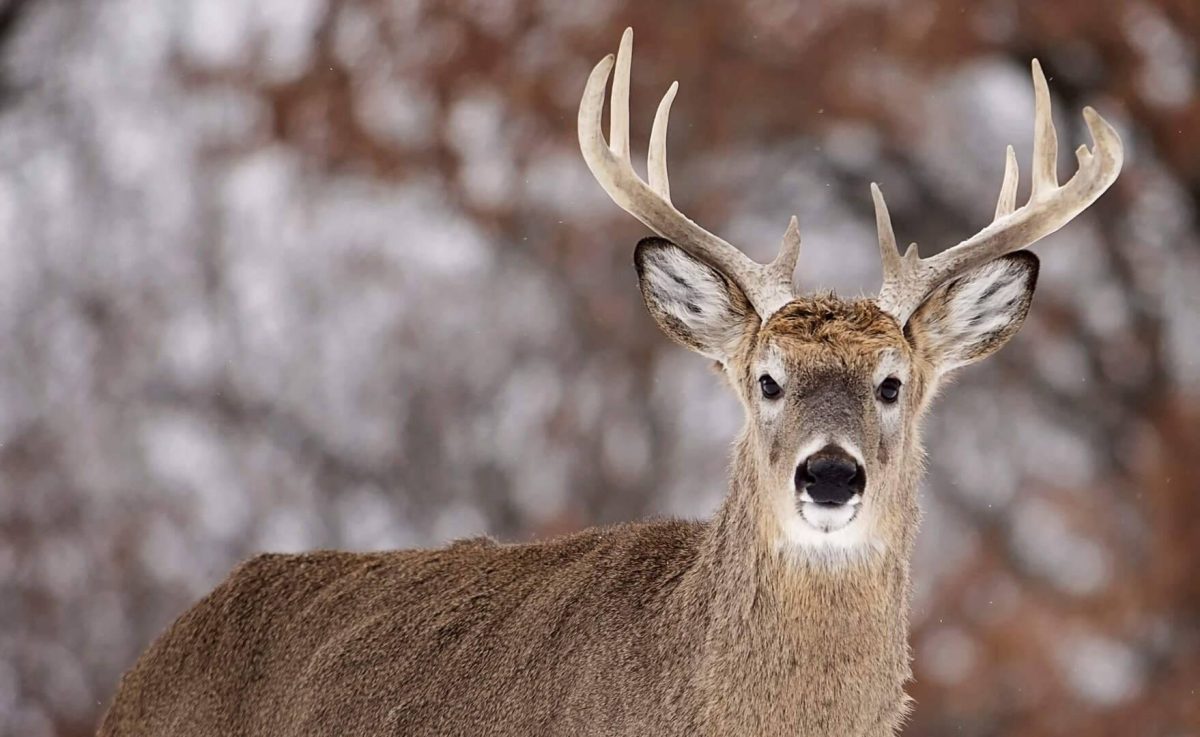Bagging Late Season Bucks: Whitetails 365

Bagging Late Season Bucks: Whitetails 365
Late muzzleloader season presents a prime opportunity for hunters to pursue mature bucks. With the chaotic energy of the rut simmering down, you will see several mature bucks gradually revert to their regular patterns, meandering back to their core habitats. This transition period offers a strategic advantage to hunters who have meticulously scouted and identified a buck’s core area. The shift in the deer’s behavior during this late muzzleloader season allows for a more predictable understanding of their movements. This period demands patience and a deep understanding of the deer’s intrinsic tendencies, as they cautiously navigate their surroundings, warier and more vigilant after being hunted for several months. They’re smarter than ever, so you need to bring your best hunting game to the table.
Pattern Bucks
Understanding deer patterns during the Late Muzzleloader season is somewhat similar to strategy used in October. Leveraging information from your trail cameras can offer valuable insights into the presence and timing of deer in specific areas. If you see a buck frequenting a field in the evening. he is probably bedding close by, and if all goes well, you are likely to see him again in that field. Similarly, deer often revisit familiar bedding areas and traverse between these sanctuaries and their food sources Although the patterns might deviate from those observed in October, it’s essential to recognize that deer can still be predictable during the later part of the season.
Hunt Food Sources
As the temperatures plummet and winter sets in, the instinctual drive for survival propels the deer to focus on two things: food and cover. Compelled by the urgency to restore lost calories burned during the intense chasing of the rut, they are drawn to areas abundant with food. Deer tend to frequent food sources consistently. Sugar beets and turnips become some of your best food sources.
You want to hunt larger fields, ones that the deer haven’t annihilated before winter. The bulbs are high-energy food sources and can remain in the ground well into the late season. Sugar beets, bulbs, and turnips offer deer a rich source of nutrition and are particularly attractive during the colder months. Another food source that is sure to draw deer, if you still have some standing, are standing grains. Late season deer search for fields of standing grains like corn or soybeans. These grains provide not only sustenance but also shelter, as they offer concealment and protection in their tall stalks. When the snow is deep, deer do not have to work as hard to get the grain.
Whether you’re hunting food, bedding, or transition areas, it is imperative that you set up according to the wind. Deer are still shy and skittish from the previous gun seasons. They’re not easy to kill. However, with a little scouting, and planning you can sure set yourself up for success.
Find Thermal Cover
Deer keep a consistent movement pattern, traveling between their feeding grounds and designated bedding areas. Optimal choices for thermal cover include evergreens and standing native warm season grasses. Cedars, act as barriers against harsh winds, providing shleter from the relentless elements. Moreover, the thick boughs of these trees serve as protective shields, capturing snow and sleet. This is why you will find heavy deer sign in and around cedar thickets this time of year. Hillsides of CRP with cedar trees are my favorite areas to search for mature bucks.
Certain varieties of native warm season grasses retain their stature through the winter, with switchgrass standing out for its exceptional resilience compared to other grass species. These grasses not only shield deer from biting winds but also offer insulation against the unforgiving elements. Alongside the considerations of evergreen woodlots and native warm season grasses, the significance of topography cannot be overstated. Deer show a distinct preference for south-facing slopes, and when the wind blows, they seek shelter in deep ditches too. In snowy conditions, recent trails etched into the snow offer a visible trace of their travel routes, aiding in the identification of their chosen paths.
Keep Warm
The best days to hunt will be the coldest. The colder the temperature, the better for driving deer into your food plot. Deer are most active during this time the first and last couple of hours. If you can safely stand it, you need to be set up and prepare yourself to sit for those couple of hours. Wear warm layers, and your warmest boots. If you have a box blind or even a soft blind, it is somewhat easier to stay warm with your propane heater. However, if you’re out in the elements, dress in the warmest layers you can. Rechargeable and disposable handwarmers become a necessity to keep your fingers warm and working. Wear your warmest boots, and don’t get wet. If you do get cold, go back to safety.
When hunting these deer, you can position yourself near food sources during the evenings or focus on transition areas to intercept their movement between bedding and food. Alternatively, you can cautiously venture into bedding areas, anticipating the deer’s return to their sanctuaries in the mornings. Employing these varied tactics can greatly assist in understanding and tracking deer movements during the late season. If you have a food plot with prime bedding habitat surrounding it, then you have a great place for December and January. You’ve created a prime habitat especially for the conditions of late muzzleloader season.
By Aaron McKinney
January 2024
Here is last month’s issue of Whitetails 365
Here is this month’s digital version of the Iowa Sportsman
Or if you were looking for our Cattle/Dairy side of things


